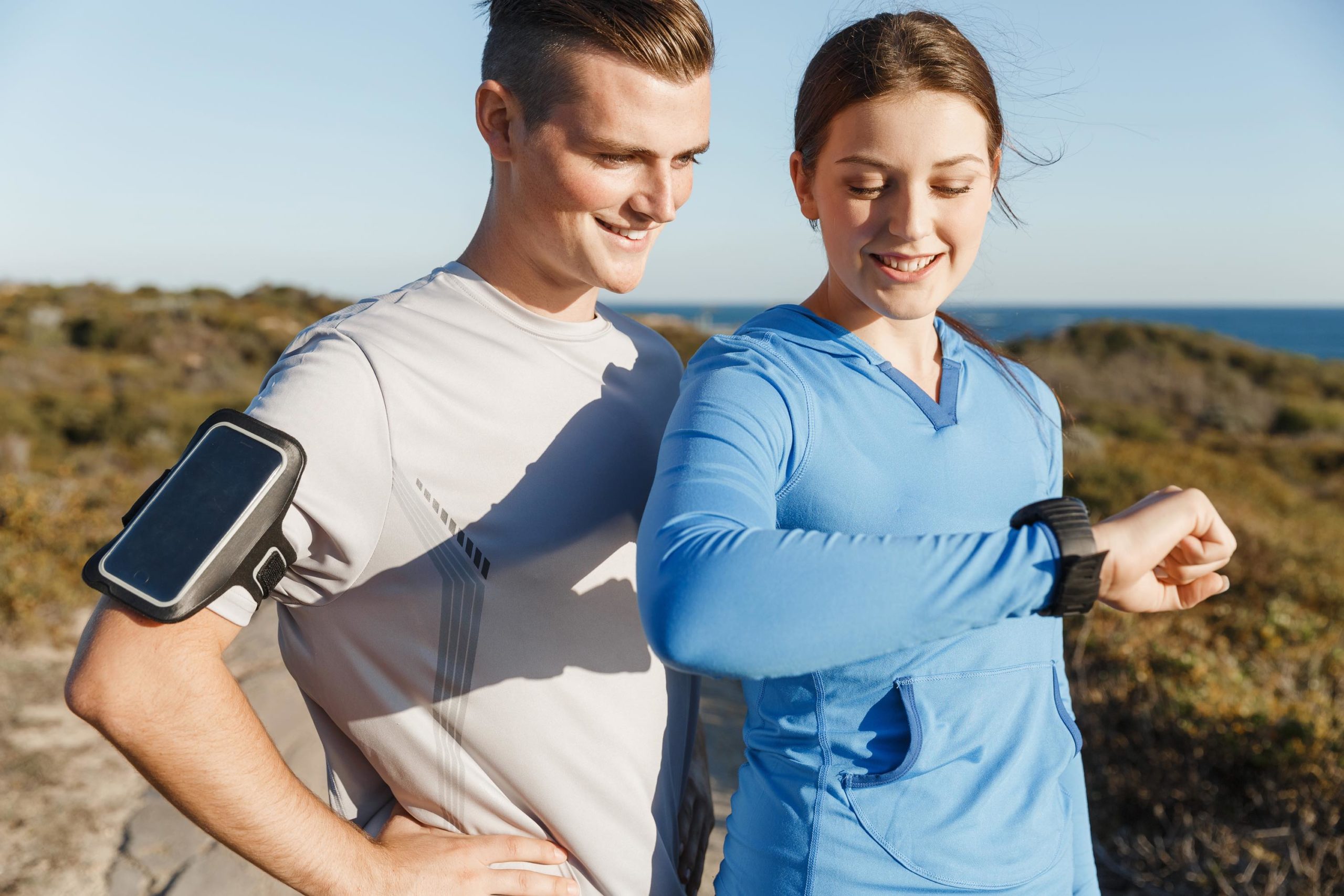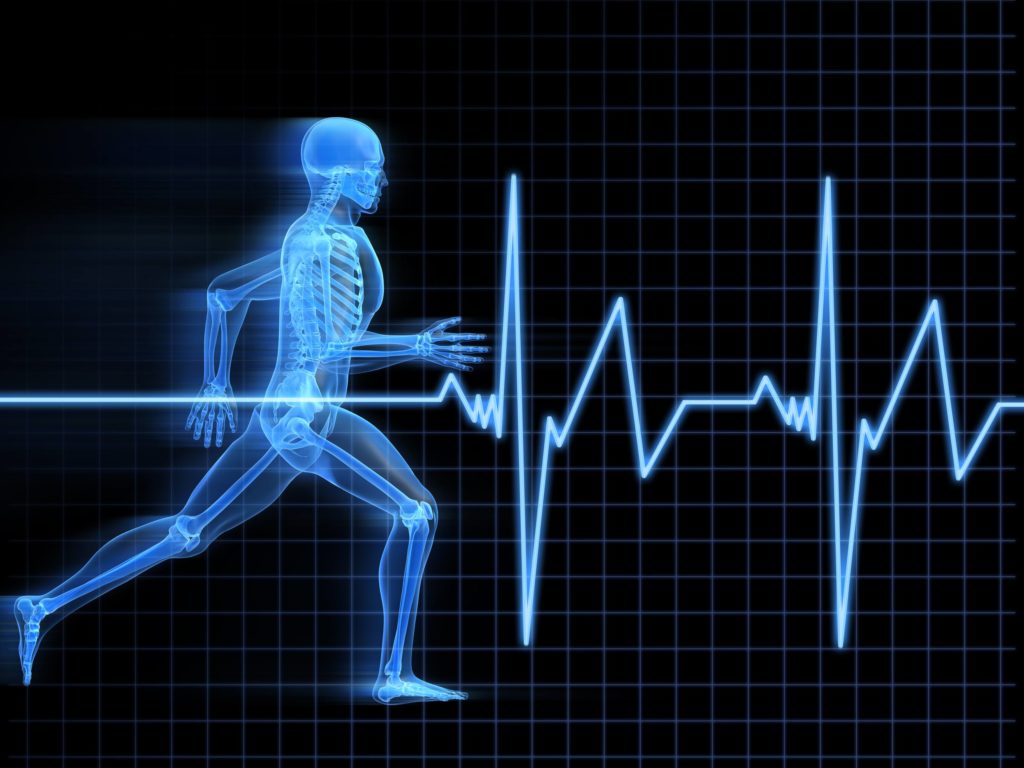How to optimize your training with heart rate variability (HRV)

It doesn’t matter whether you are a hobby athlete, an ambitious fitness fan, or a competitive athlete. For all of them, regular training has the same goal: they want to improve. In this context, the term supercompensation comes up again and again. Because only a good interplay between exercise and recovery guarantees optimal progress. Determining heart rate variability (HRV) can be a great help here.
HRV is more meaningful than pulse rate
There is hardly an athlete who has not taken his or her pulse during training. Many runners use a chest strap and watch to monitor their heart rate and adjust their training intensity accordingly. That is also a good thing. But measuring heart rate variability, or HRV for short, is much more accurate. But what exactly is HRV?
- HRV is the spontaneous rhythm between individual pulse beats.
- The duration of the pulse beats varies, and this variation depends on the physical condition.
- Important to know: This has nothing to do with a heart rhythm disorder.
- The more irregular the HRV at rest, the more powerful a person is.
- This can be seen very well in the ECG, but there are now also pulse watches and other systems with this function.
HRV is an important parameter
After numerous studies, it is clear that HRV is the most crucial parameter for assessing one’s own performance more accurately. What’s more, HRV can be used to better control the entire training program. The danger of overtraining no longer exists because everyone can act in time. After all, nothing comes from nothing, but if I put my body through too much and don’t allow it enough regeneration, it goes on strike. Unique control mechanisms of the autonomous nervous system, i.e., independent of the will, ensure that the heartbeat is less variable. The result is signs of fatigue and a reduction in performance. This then manifests itself as follows:
- The breathing rate increases and is less deep.
- The heart beats much faster than usual, even with less exertion.
- The muscles feel weaker overall, and coordination also suffers.
- Blood sugar levels rise, and the kidneys work at full speed.
- Digestion is slower and less controlled.

Sympathetic and parasympathetic nervous system
Doctors and sports scientists distinguish between the sympathetic and the parasympathetic nervous system. The sympathetic nervous system is the athlete’s best friend when it comes to performing. It makes the heart beat faster, pumps more blood, and thus oxygen into the muscles under stress. The parasympathetic nervous system then takes up the work after the exertion and should also be the athlete’s best friend. This is because it ensures the necessary recovery, the restoration of performance, and, ideally, even increased performance. During this time, the heart rate drops, the digestive system runs at full speed, and the immune system is also at its best. This is true for every athlete:
- There should always be a harmonious balance between sympathetic and parasympathetic activation.
- It’s perfectly okay to completely exhaust yourself in training. But this only makes sense if you give the body the time to regenerate afterward.
- And it is precisely this time that is much easier to determine with the help of HRV.
- The higher the performance, the better the values of the HRV.
The time after training is crucial
You don’t necessarily have to have studied medicine or sports science to understand HRV measurement mechanisms. Basically, it is even relatively simple: there are parameters for sympathetic, parasympathetic, and total activation in the measurement. This results in so-called R-R intervals. These can be seen in the fluctuation between the spikes on the ECG. A suitably equipped pulse watch transmits the data, and software evaluates it. Very important: meaningful HRV data is naturally not obtained during training (when HRV is close to zero), but in the time afterward. And here, a distinction is made between different measurement methods:
- HRV measurements that take place over hours or even days aim to detect possible illnesses or permanent stress factors.
- For most athletes, ten-minute HRV measurements are sufficient. These are most meaningful in the morning directly after getting up because the body usually really rests then.
- During the measurement, it is essential to remain as relaxed as possible, breathe evenly, and avoid movements, talking, and coughing.
Endurance athletes in particular benefit
Several scientific studies have recently been able to impressively prove that training control with HRV determination is significantly more effective. This is especially true for endurance athletes, but fitness and strength athletes can also benefit from it. In the meantime, there are special heart rate monitors, apps, and evaluation systems, which fortunately are not that expensive. Here is a study that can help you with your purchase decision.